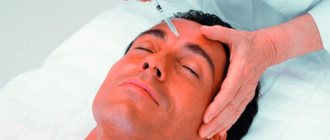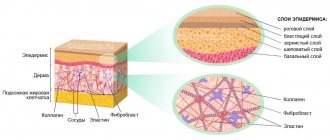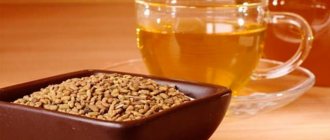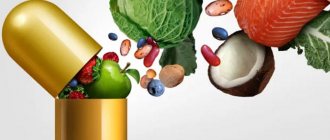Liposomes
Liposomes are lipid- based bilayer vesicles that are capable of encapsulating and transporting small molecules with low solubility in the human body. In this way, it is possible to identify a microscopic transporter that transports, for example, vitamin C, and thanks to a liposome, it reaches the desired “destination station”. But let's take everything in order from the very beginning. [1]
A vesicle is something like a container that consists of a lipid bilayer and is designed to separate the contents from the cytoplasm or extracellular environment, which is fluid based. There are different types of vesicles containing liquid or gas . Liposomes are a type of spherical vesicle that may have one or more phospholipid bilayers. [2] [3]
The very meaning of the word liposome comes from the Greek terms “lipos” and “soma” , which mean “fat” and “body” . A liposome is a “closed ball”. Its membrane is formed by the already mentioned lipid bilayer , which consists of two layers of closely spaced phospholipids. They have two parts - a head and a tail, which are very different from each other. Thus, the “head” is polar, hydrophilic (loves water) , and the tail is non-polar, hydrophobic (repels water, loves fat) . A lipid bilayer is formed by joining two separate membranes by "pulling" the tails together . The hydrophilic heads “turn away” from each other and are attracted to surrounding water, creating a membrane. [4] [5]
Liposomal products have become popular in recent years, but liposomes themselves have been in use since before then. They were first studied by Alex Bangham in 1961 , and scientists have been studying their applications ever since. Today, their applications are being introduced into the fields of gene distribution, biomolecules and, perhaps most famously, pharmaceuticals. Their importance is also demonstrated by the fact that this is the first nanotechnology for the development of drug delivery systems to organs that has been successfully introduced into clinical practice. Nanotechnology itself is a very interesting topic and therefore liposomes are used in several fields. Researchers have looked at using them to deliver anti-inflammatory, anti-fungal or anti-cancer genes . In addition, they are now a useful tool for a variety of scientific disciplines , not only chemistry and biology , but also theoretical physics, biophysics or mathematics. [3] [6]
The discovery of a new way of distributing active ingredients logically opened up many possibilities for use. The purpose of the article is to present this form of food additives, indicate its advantages and disadvantages compared to the classical form.
Types of liposomes
An important attribute of liposomes is their size , which can vary. They may have one or more bilayer membranes, and their vesicles may range in size from 0.025 µm (small) to 2.5 µm (large). Liposomes are divided into 3 types , which are used for drugs and as models for artificial cells [3] [7]:
- Multilayer vesicles (MLV)
- Small unilamellar vesicles (SUVs)
- Large unilamellar vesicles (LUVs)
Unilamellar vesicles have 1 phospholipid bilayer that covers the aqueous solution. Multilamellar vesicles have several layers (one inside the other), which are separated by a layer of water . The shape of multilayer liposomes resembles an onion . The size and structure of liposomes are important because they determine the amount of substance encapsulated , as well as the half-life. [3]
In addition to size and shape, liposomes can also vary in phospholipid base [8]:
- Phospholipids from natural sources
- Modified natural phospholipids
- Semi-synthetic phospholipids
- Fully synthetic phospholipids
- Phospholipids with “unnatural” head groups
Liposomal nanosystems based on soy phospholipids as a container for drugs
A.I. Shanskaya, S.M. Puchkova
FSBI "Russian Research Institute of Hematology and Transfusiology FMBA" St. Petersburg
Transfusiology No. 2, 2013
Summary
A universal liposomal container has been developed for encapsulating various pharmaceutical intravenous drugs based on the nanophospholipid system. The results of the presented studies can be used both in scientific experiments and in mastering the technology for producing new liposomal forms of drugs.
Key words: soybean phospholipids, liposomes, nanoparticles, alpha-tocopherol.
The current development of science and technology, along with the search and synthesis of new drugs, makes it possible to improve the dosage forms of already used drugs, increasing their therapeutic effectiveness and reducing the frequency and degree of adverse reactions. One of these methods of improvement is the creation of lipid-containing systems – liposomes. Liposomes are microscopic fatty particles filled with liquid, the shell of which consists of molecules of the same natural phospholipids (PL) that are part of cell membranes. According to the classification of lipids, PL belong to the group of water-soluble swelling amphiphiles. The amphiphilicity of PL, due to the presence in the molecule of a hydrophilic part - a phosphorylated alcohol (the so-called “polar head”) and a lipophilic part - a chain of fatty acids (the so-called “fatty acid tail”), determines their unique properties - the ability to emulsify and disperse in aqueous systems with the formation under certain conditions of membrane structures (lamellas, liposomes, micelles). It is this property of PL that nature took as the basis for the construction of all cell membranes without exception. It, with targeted use and special selection, allows the use of PL as a surfactant in the preparation of emulsions or in the form of nanoparticles (liposomes, micelles) as a vehicle for the delivery of medicinal compounds and biologically active substances. Water-soluble (hydrophilic) drugs can be enclosed in the internal water space of liposomes, and fat-soluble (hydrophobic) drugs are included in the lipid bilayer.
As is known, membranes play a major role in the system of biological communication, thanks to specific receptors that perceive external stimuli. Phospholipids are the main class of membrane lipids. Phosphatidylcholine (PC), which is maximally represented in the membranes of various tissue cells (35-50% of all PL), phosphatidylinositol (PI), which is a minor metabolically significant PL, and the major membrane-structuring phosphatidylethanolamine (PEA), are involved in many processes of cell life. . Natural PL are usually characterized by high physiological tolerance and are easily metabolized. To trace the path of exogenous PL introduced into the body, studies were carried out using radioactive isotopes. For this purpose, highly purified PC and PI isolated from a phospholipid mixture of soybeans were most often used. It has been established that in rats, dogs and humans, 90% of incoming PC is absorbed from the intestines within 24 hours. Its maximum concentration in the blood is detected within 6 hours after entering the body. PI is metabolized similarly [1]. When using preparations from natural, highly concentrated phospholipids obtained from genetically non-modified soybeans containing more than 75% unsaturated fatty acids, a decrease in the activity of blood enzymes (ALAT, AST) and the value of pigment metabolism indicators, and an improvement in the ultrasound structure of the liver parenchyma were found. Patients noted the disappearance of discomfort in the right hypochondrium and improved tolerance to fatty foods [2].
The detoxification and anti-radiation effects of drugs with this mechanism of action are based on the ability of polyunsaturated fatty acids, which are part of phospholipids, to bind toxins and active chemical radicals. Phospholipids are an important component of the non-enzymatic antioxidant defense of natural lipids.
Currently, much attention is paid in domestic and foreign literature to the development of phospholipid transport systems. Phospholipid nanoparticles (micelles/liposomes) have a number of advantages over others, for example, polymer nanoparticles. They are non-toxic, biodegradable, do not cause allergic reactions, due to their structure and composition, and have a high affinity for cell membranes, which allows the drug to be delivered inside the cell. Currently, there are 10-15 certified nanosystems in the world used as drug carriers, and on the pharmaceutical market there are several dozen, mainly antitumor drugs, equipped with a phospholipid transport system (liposomes). Most drugs are in the late stages of clinical trials.
One of the promising areas in the development of pharmacology is nanotechnology. Technological processes using microparticles (fat emulsion preparations) have been replaced by technologies that allow working with nanoparticles. The properties of such particles make it possible to create nanocompositions that can radically change the diagnosis and treatment of many diseases [3].
In the practical aspect, nanotechnology is a technology that manipulates single objects no larger than 100 nm in size and uses their unique properties that arise due to the fact that in nanoparticles, due to their small size, the physical and chemical properties of the substance change significantly. In the field of medicine, the capabilities of nanotechnology are aimed at controlling physical, chemical and biological processes occurring in living organisms at the molecular level using nanomaterials and nanoparticles [4].
The main pharmacological application of currently existing nanoparticles is their use as carriers of drugs. Such particles can facilitate absorption and passage through biological membranes, protect against metabolism, improve the tissue distribution profile, and enhance cell permeability. As a result, the safety of drug use is significantly increased, their toxicity and the risk of side effects are reduced [5].
Despite the common name, nanoparticles vary significantly in size, shape and composition of the substances they contain. In shape, they can have the form of a ball, sphere, tube, micelle, etc. Mostly nanoparticles are complex multicomponent structures, sometimes having several layers that differ in physical and chemical properties.
From our point of view, the most studied nanoparticles are liposomes - nanospheres of an aqueous substance enclosed in a phospholipid shell; their size can vary from several tens of nanometers to tens of micrometers. The thickness of the lipid bilayer is determined primarily by the length of the hydrocarbon chains and is approximately 4–5 nm. The distance between bilayers is 2–3 nm and can increase up to 20 nm depending on the charge of the bilayer. Liposomes are unique drug carriers because they provide not only targeted delivery, but also regulation of the rate of drug release at the site of the pathological process. Artificial membranes built on the basis of a lipid bilayer make it possible to reproduce many functions and characteristics of biological membranes in model systems (liposomes). The ability of liposomes to include substances of various chemical natures without any restrictions provides truly unique opportunities for solving some medical problems. The inclusion of medicinal substances (drugs) in liposomes can significantly increase their therapeutic effectiveness, since, on the one hand, the drug located in the liposome is protected by its membrane from the action of unfavorable factors, and on the other hand, the same membrane does not allow the toxic drug to exceed the permissible concentration in biological fluids of the body. In this case, the liposome acts as a storage facility from which the drug is released gradually, in the required doses, over the required period of time [6, 7, 8].
The properties of liposomes are largely determined by the chemical composition of the lipid bilayer. A number of authors have shown that the inclusion of anionic PL (phosphatidylethanolamine, inositol phosphatide) into the lipid bilayer of liposomes increases the stability of the liposomal vesicle. The introduction of a negatively charged component gives the membrane a negative charge, which prevents the aggregation of vesicles and their adhesion to the walls of blood vessels.
Thus, in the work of M.V. Zhukova et al.
[9, 10], devoted to the encapsulation of doxorubicin in liposomes, used negatively charged phosphatidylethanolamine (PEA) in combination with the antioxidant component, α-tocopherol, to form liposomal vesicles. The lipid bilayer contains PC, PEA and α-tocopherol in a high ratio of 60:40:1. The use of such a composition is an example of the fact that phospholipids, being a favorable substrate for oxidation, at the same time participate in a synergistic increase in the effectiveness of tocopherol. Thus, prevention of membrane damage and deactivation of the free radical oxidation process can be achieved using a composition of phospholipids and polyphenols (α-tocopherol).
It has been shown that the degree of synergy depends not only on the ratio of PL and polyphenols, but also on the relative proportion of PC and PEA in the PL complex. I would like to note that PC was obtained from Epikuron 200 soybean lecithin (Lucas Meyer, USA), containing 92% PC. The same authors showed how measuring the composition of the liposome bilayer affects their properties.
Many authors prefer to use egg PC rather than soybean as a component of the bilayer. Thus, in the work of employees of the Institute of Bioorganic Chemistry named after. MM. Shemyakin and Yu.A. Ovchinnikov RAS [11], the composition of the LS bilayer uses egg PC and PI in a ratio of (8:1) mol. The liposomal form of the diglyceride derivative of methotrexate has been shown to be more effective than the parent drug, including reduced systemic toxicity, as well as overcoming the phenomenon of multidrug resistance. It should be noted that in recent years, preference has been given to PL isolated from soybean raw materials. The few examples above indicate that an important condition for maintaining the stability of the liposomal substance is the presence of the antioxidant α-tocopherol (α-TF) in liposomes. The ability of α-tocopherol to dissolve only in fats and organic solvents makes it difficult to enter the cell. The decisive factor in the delivery of α-TF into the cell through its membrane is its inclusion in liposome bilayers. The literature [12] describes a method for obtaining the liposomal form of α-TF, which makes it possible to obtain liposomes with high biological activity and storage stability. Carrying out cyclic homogenization ensures a liposomal size of 50-400 nm. A given liposome size is achieved by selecting the pressure and number of homogenization cycles. The ratio of α-TP and phospholipids is 1:6 by weight, respectively. The resulting drug can be used in the medical industry, in veterinary medicine as feed additives and injections for animals, as well as in the cosmetics industry. The use of several antioxidants in one preparation has important advantages, but is not without disadvantages. The benefits are that some antioxidants, such as tocopherol-ascorbic acid, can enhance each other's effects. At the same time, depending on the relationship between them, a mutual weakening of the effect is possible. This was demonstrated, for example, by tocopherol-carotenoid pairs in model systems [13].
The membrane-protective effect of vitamin E is associated with the manifestation of antioxidant properties and with its participation in the organization of membrane structure due to the direct interaction of its isodental side chain with polyunsaturated fatty acids of phospholipid membranes. This interaction leads to a denser packing of mitochondrial membranes. As a result, they have increased resistance to the effects of lipid peroxidation processes.
Deficiency of α-TF is accompanied by intensification of lipid peroxidation processes, which consists of an increase in the concentration of malondialdehyde and a decrease in the activity of the enzymatic component of antioxidant defense (superoxide dismutase and catalase). Recent data indicate that free radical oxidation reactions play an important role in the pathogenesis of the consequences of extreme conditions. The use of antioxidant drugs in these cases seems quite justified.
In the literature, a large number of works are devoted to α-TF as the most important vitamin and antioxidant [14]. The issues of the biological role, metabolism, vitamin E deficiency (clinical manifestation of hypovitaminosis E), and its need for the body are widely discussed. The wide spectrum of action of this active substance and the need for its use in various pathologies are emphasized. I would especially like to note that vitamin E has cancer-preventive properties, absorbs radicals, neutralizes carcinogens, increases the protective ability of T-lymphocytes, softens internal inflammation and prevents it from becoming chronic, and most importantly, suppresses tumor growth. However, studies devoted to the creation of a liposomal form of α-TF are rare, and to date there are no preparations with α-TF for intravenous administration.
As a result of research carried out at the Russian Research Institute of Hematology and Transfusiology in the laboratory of fat emulsions, a universal liposomal container for intravenous administration was created for encapsulating various pharmaceuticals, the lipid components of which are isolated from domestic raw materials - soybean phospholipids. We have obtained liposomes based on soybean phospholipids containing α-tocopherol.
In experiments on rats, the therapeutic effect of α-TF and liposomes with α-TF in long-term compartment syndrome was studied [15]. The study of the content of malondialdehyde, the activity of catalase and superoxide dismutase in the tissues of the liver, kidneys, myocardium and brain made it possible to judge the degree of lipid peroxidation. The research results showed a pronounced antioxidant effect of liposomes with α-TF, the therapeutic effectiveness of which was 1.5–2 times higher than the effectiveness of the conventional form of α-TF. A method for producing liposomes with cytochrome C for intravenous administration has been developed. The liposome shell consisted of soy lecithin, cholesterol and a component containing negatively charged phospholipids.
Work has been carried out to study the anti-ischemic protection of the myocardium using liposomes containing cytochrome C [16]. The study of therapeutic effectiveness was carried out on a model of ischemia in rats. It was found that the administration of liposomes with cytochrome C to animals after acute myocardial ischemia prevented the development of severe disorders of energy metabolism in the heart and inhibited the activation of lipid peroxidation. In animals that were injected with liposomes with cytochrome C, the content of phosphocreatine and ATP in the heart was significantly higher than in rats that were injected with its usual form, and structural damage to the myocardium was less pronounced. The higher anti-ischemic properties of liposomes with cytochrome C are apparently associated with the prolongation of its therapeutic effect. The presence of a liposomal membrane in cytochrome C contributes to its retention in destructive areas. The research results allow us to recommend liposomes with cytochrome C for experimental study as a cardioprotective agent.
Studies have also been conducted on the inclusion of hemoglobin in a liposomal container [17]. It is known from the literature that hemoglobin and other heme-containing proteins catalyze the peroxidation of unsaturated fatty acids that are part of phospholipids, the oxidation products of which in turn oxidize hemoglobin. Vesicles consisting of lecithin containing phosphatidylcholine with saturated fatty acid residues have a stabilizing effect on hemoglobin. In addition, they are more inert regarding blood clotting processes. We have obtained samples of soy lecithin of varying degrees of hydrogenation (40, 50 and 60%). Ni-Raney was used as a catalyst. Based on samples of hydrogenated soy lecithin, 9 series of liposomes were obtained, the study of the physicochemical characteristics of which showed the possibility of obtaining a finely dispersed, non-toxic, pyrogen-free liposomal preparation that does not affect the osmotic resistance of erythrocytes. When developing a method for obtaining hemosomes, we used two compositions of the bilayer of liposomal vesicles. The first composition contained a lecithin-enriched fraction of soy phospholipids as the main component, the second one contained 50% hydrogenated soy lecithin with an iodine value of 63.0. Both formulations additionally contained cholesterol, acid phospholipids and α-tocopherol. The separation of non-encapsulated hemoglobin was carried out by centrifugation at 3500 rpm at 4°C. The average vesicle size was 1.0–1.1 μm, pH = 7.1–7.3. The hemoglobin concentration was 120 mg/ml. The advantage of a bilayer composition based on hydrogenated soy lecithin in the process of encapsulating easily oxidized hemoglobin has been shown. The values of malondialdehyde and oxidation coefficient were two times lower than those of hemosomes based on soy lecithin. The same pattern was observed in the content of metform in hemosomes.
When administered to animals, hemosomes based on both the first and second compositions were non-toxic. Unfortunately, work on the inclusion of cytochrome and hemoglobin in liposomes did not go beyond the scope of the experiment. The technology for introducing α-TP into the bilayer by obtaining a thin film with subsequent resuspension and grinding of the “coarse” dispersion of liposomes on a high-pressure homogenizer has been developed. As a result of the research, the optimal lipid composition of the vesicle bilayer was determined and an original, unparalleled liposomal preparation for intravenous administration, Lipoferol, was created, which is a nanosystem containing vesicles with a diameter of no more than 100 nm. It is known that a decrease in the negative charge of erythrocytes is a factor contributing to their aggregation and a decrease in the suspension stability of the cell suspension. For the stability of dispersed systems and suspensions, it is necessary to have a stabilizer, which ensures the stability and dynamic plasticity of the entire system.
Together with the staff of the institute’s blood conservation laboratory, a study was carried out of the effect of liposomes on such properties of red blood cells as electrophoretic mobility, ESR, the number of osmotically unstable red blood cells, hemolysis, viscosity, deformability, and others [18].
It was found that incubation of preserved donor blood with liposomes at a dose simulating a therapeutic dose (2:6 mg of phospholipids per 1 ml of donor blood) leads to an increase in the negative value of the zeta potential of erythrocytes. Further study of the interaction of liposomes with donor red blood cells revealed an increase in the suspension stability of blood when stored in the presence of liposomes for 14 days. There was a decrease in ESR, a decrease in the accumulation of microclots and the number of osmotically unstable erythrocytes compared to the control.
When studying the therapeutic effectiveness of the liposomal drug with α-TF Lipoferol on a model of liver damage in animals during acute intoxication with carbon tetrachloride, it was found that the drug has a higher hepatoprotective effect and has a pronounced therapeutic effect compared to α-TF per se. The effectiveness of Lipoferol has also been shown in infusion therapy for burn shock. There was a significant improvement in the hemodynamic system and oxygen regime of the body, and a decrease in the phenomenon of toxemia in the blood of burned animals. The increase in therapeutic effectiveness is also evidenced by the greater survival rate of animals compared to the control.
The multifunctionality of liposomes, revealed in various experimental pathologies, allows us to count on their successful inclusion in drug treatment regimens used during infusion therapy in the clinic. The lack of industrial production of liposomal drugs, especially for intravenous administration, is caused by the peculiarities and difficulties of the technology for their production. The creation of liposomal drugs for intravenous administration for wide clinical use is an urgent task for domestic medicine.
Advantages and disadvantages of liposomal formulation of drugs and nutritional supplements
The liposomal form is an interesting alternative, but it has both advantages and disadvantages . This is due, for example, to a wide range of goods of varying quality . For a better overview, we present their strengths and weaknesses [9] [10]:
Advantages of liposomes:
- convenient for the consumer
- useful for people with problems swallowing tablets
- same effect at lower dose
- have higher bioavailability
- better absorbed
- better delivered to cells
- can transport both hydrophobic and hydrophilic components
Disadvantages of liposomes:
- higher price
- production problems such as large particle size
- instability of some products
Liposomal Nutritional Supplements
The liposomal form of drugs finds its application in various fields of pharmacology and medicine, and food supplements are one of these fields. There is a wide range of vitamins and other nutrients available in liposomal form on the market. But are liposomal nutritional supplements the best choice? The best source of relevant information is research, so we have compiled the results of several studies that tested the functionality of liposomal nutritional supplements.
One of the nutrients studied was, for example, vitamin B12 , a deficiency of which is a common problem for people regardless of age. The classic vitamin B12 deficiency intramuscular injection , so researchers have studied changing vitamin levels using liposomal supplements. of both sexes participated in the study, which lasted about 7 months . Participants were " non-vegetarian " over 50 years of age and received vitamin B12 sublingually (under the tongue) 3 times daily with a daily dose of 1000 mcg methylcobalamin . According to the results, after the first week, B12 levels increased by an average of 54.68%, after a month by 105.51% and after 2 months to 270% . Thus, liposomal B12 supplements are clearly effective. However, it is a pity that this study did not include a comparison with the conventional "non-liposomal" form, as the scientists themselves state that it would be interesting to test whether the liposomal form of drugs and nutritional supplements is better than the conventional form. [12]
In addition to vitamins, other nutrients such as magnesium are also available in liposomal form. A 2022 study examined the bioavailability of magnesium in Sucrosomial® magnesium. This is a product whose component is magnesium oxide, protected by a liposome-like structure. The study consisted of two methods, one of which examined the absorption of magnesium in the intestinal mucosa of rats. However, we were more interested in the results of the second method involving humans. Participants were given 350 mg of magnesium in 4 forms – Sucrosomial® magnesium, magnesium citrate, magnesium oxide or magnesium bisglycinate. in magnesium levels in the blood, red blood cells and urine were observed According to the study, the Sucrosomial® magnesium formulation resulted in higher bioavailability than other formulations. In conclusion, further research is needed to improve clinical effectiveness. However, this means that not only vitamins, but also minerals, such as magnesium in liposomal form, are a more effective option than conventional medications and nutritional supplements. [14] [15]
Magnesium is an essential mineral, and its spectrum of action is wider than it seems. To learn more about magnesium, read the article - Why is magnesium so important for health?
Material and methods
75 patients with COVID-19 with characteristic symptoms of the disease and a positive result for SARS-CoV-2 were selected for inclusion in the study. Patients were isolated and treated at home using remote systems, examined daily for 10 days with follow-up for up to 1 month. The diagnosis was confirmed by a rapid whole blood test for IgM/IgG antibodies to SARS-CoV-2 (rapid test for IgM/IgG antibodies to SARS-CoV-2 “Liming Bio”, Jiangsu, China). LLF (Lactyferrin™ Forte (Lactiferrin Forte)) drinking, Sesderma Laboratories (Sesderma Laboratories, Valencia, Spain), as well as liposomal zinc (LC) in the form of syrup (Zinc Defense) Sesderma Laboratories , Valencia, Spain) were administered orally at 4–6 doses per day. We took a solution of liposomal zinc at a dose of 10 mg / 10 ml 2-3 times / day. A control group of 12 patients received only LLF. The total daily dose of LLF ranged from 256 to 384 mg/day. Lactyferrin™ (Lactiferrin) contains LF (32 mg / 10 ml and vitamin C 12 mg / 10 ml). Both substances are hydrophilic and their absorption in the stomach is very limited. The liposome, with its closed vesicular system with a phospholipid bilayer, can encapsulate both hydrophilic (LP, vitamin C, zinc) and hydrophobic substances.
All family members in contact with patients (256 people) received half this dose. Patients with headache, dry cough and nasal congestion also used Lactyferrin (Lactiferrin), nasal drops, and Lactyferrin (Lactiferrin), oral spray, 4 times / day, respectively. Also, all patients with shortness of breath used LF in an aerosol dosage form (SES Nanomist), Sesderma Laboratories.
The condition of all patients was assessed remotely by the medical team. Patients were observed daily (at least 2 times/day) for 10 days, and then after 30 days. For each patient in each case, symptoms were assessed on a scale from 0 to 3 points as follows: 0 points - no symptoms; 1 point – mild severity; 2 points – moderate severity; 3 points – severe degree. Taste and smell were assessed on a scale from 0 to 5 points, where 0 points is the absence of taste/smell (ageusia/anosmia), and 5 points is the absence of changes in taste/smell.
You may be interested in these products:
Liposomal form of vitamin C
One popular liposomal product is vitamin C, which has multiple functions in the body and is present in many processes. Vitamin C can be taken orally and also intravenously . Vitamin C given intravenously reduces oxidative stress. However, according to a 2016 study, it may also improve physiological function in adults. The oral form of the vitamin is less effective than the intravenous form, which may be due, for example, to its lower bioavailability. As a possible alternative, vitamin C is available in liposomal form, the effectiveness of which was examined in the study. [eleven]
The study included 11 participants who were divided into 4 groups: 1. placebo, 2. oral non-encapsulated form, 3. oral liposome-encapsulated form, and 4. intravenous form. The study concludes that vitamin C is better bioavailable in liposomal form than in the conventional non-encapsulated form. According to the results, the concentration of vitamin C in the bloodstream was higher in the liposome-encapsulated form than in the non-encapsulated form, but lower than in the case of intravenous administration. It follows that vitamin C is indeed better absorbed in liposomal form. [eleven]
According to a 2016 study, the liposomal form of vitamin C is especially beneficial for athletes . They are more likely to suffer from upper respiratory tract infections caused by training stress. Vitamin C is effective in reducing symptoms , as well as in preventing colds, with physical activity in general . Therefore, the liposomal form offers benefits related to nutrient absorption and bioavailability. The results show that there are only a few studies that look at the absorption and health effects of liposomal products, however, there are no studies that focus on their effects on athletic performance . It would definitely be interesting to compare the effectiveness of vitamin C in different forms for endurance athletes or those involved in strength training. [13]
Vitamin C is a key health benefit due to the fact that it is involved in many processes. Want to know more about him? Read our article - Vitamin C: everything you need to know about it before it's too late
Research results
In the group with combined treatment (LLF + LC)
The median age of patients was 42 years; 45% were women (the control group was comparable in terms of gender and age composition of patients). No deaths were recorded during follow-up.
Before treatment, the most common symptoms were weakness/fatigue (94.44%), loss of smell (83.33%) and taste (88.89%), muscle pain (66.67%), dry cough (61.11%). ), headache (55.56%), diarrhea (44.4%), runny nose (33.33%), difficulty breathing (27.78%), nasal congestion (22.22%) and odynophagia (22.22 %). Other symptoms included fever (38%), cramps (30%), insomnia (50%), nocturnal agitation (30%), nausea and severe abdominal pain, flatulence, sore throat (28%); 1 patient complained of sudden and severe hair loss (1.3%). Table 1 shows the proportions of patients with different severity of symptoms.
After 48 hours from the start of treatment, patients reported significant relief of symptoms. The proportion of patients experiencing weakness and myalgia has decreased. All patients with moderate and severe shortness of breath used LF in the form of an aerosol in the form of the Nanomist inhaler (SES Nanomist, Sesderma Laboratories). There was no significant improvement in taste or smell after 48 hours (Table 1). Improvement in the sense of taste and smell occurred more slowly compared to other symptoms.
On day 5 (120 hours) from the start of treatment, the condition of all participants continued to improve, but there was no significant improvement in the sense of taste and smell. The restoration of smell and taste in patients occurred more slowly than the relief of other symptoms of the disease (Table 1).
Table 1.
Frequency and severity of symptoms during treatment
Dynamics of main symptoms
Dry cough (Fig. 2): at the beginning of the study, more than half of the patients complained of a dry cough. During the therapy, the number of patients with dry cough decreased significantly.
Difficulty breathing: All patients who reported difficulty breathing at baseline (day 0) reported improvement after 48 hours.
Myalgia (Fig. 3): After 48 and 120 hours from the start of treatment, the proportion of patients with muscle pain associated with COVID-19 decreased significantly.
Fatigue (Fig. 4): the proportion of patients who were bothered by increased fatigue and weakness decreased after 48 and 120 hours from the start of treatment.
Headache (Figure 5): On day 0, more than half of patients reported severe headache; after 48 and 120 hours from the start of therapy, none of these patients complained of headache.
Taste disturbance (Fig. 6): initially, the majority of patients had ageusia (complete absence of taste) or hypogeusia (partial dullness of taste), only 11.11% of patients did not have this symptom. During treatment, a progressive restoration of the ability to distinguish the taste of food was noted, and on the 10th day, all patients had no disturbances in the perception of taste of food.
Impaired sense of smell (Fig. 7): initially, anosmia (complete absence of smell) or hyposmia (partial dullness of smell) was observed in most patients. During treatment, a progressive restoration of the sense of smell was noted, and on the 10th day it was completely restored in 95% of patients.
Rice. 2.
Number of patients (%) with dry cough during treatment
Rice. 3.
Number of patients (in%) with myalgia during treatment
Rice. 4.
Number of patients (%) with fatigue during treatment
Rice. 5.
Number of patients (%) with headache during treatment
Rice. 6.
Number of patients (in%) with taste disturbances of varying severity during treatment
Rice. 7.
Number of patients (in%) with impaired sense of smell of varying severity during treatment
The results obtained in the control group receiving LLF were comparable to the results in the main group.
Analysis of these results showed that oral administration of LLF and LLF + LC ensures rapid recovery in 100% of patients within the first 4−5 days. The same treatment, but at lower doses, appears to have a potential preventive effect against COVID-19 in healthy people directly involved with patients.
Importantly, the combination of oral and topical treatment provided significant relief from headache and dry cough. Some of these patients experienced sinus congestion. Dietary supplements of LLF and LC supported and enhanced the immune system response due to their antioxidant, antibacterial and antiviral properties.
Disadvantages of Liposomal Nutritional Supplements
The liposomal form of dietary supplements itself is an excellent choice, but rarely are new discoveries discovered that do not have negative aspects. Therefore, it is fair to point out the possible disadvantages that are associated with the use of liposomal products.
Phospholipids in liposomes
In one of the previous chapters, we state that the phospholipids used to encapsulate the active ingredient come from a variety of sources . Lipids are essentially fats , and not all fats are good for the body. Phospholipids are composed of fatty acids and phosphates, and they can be either unsaturated or saturated , which are not among the fats currently in demand. In this case, it depends on the product, for example, there are liposomal forms with sunflower phospholipids, which are healthy because they contain unsaturated fatty acids. If possible, check the origin of the phospholipids in these products. [16]











